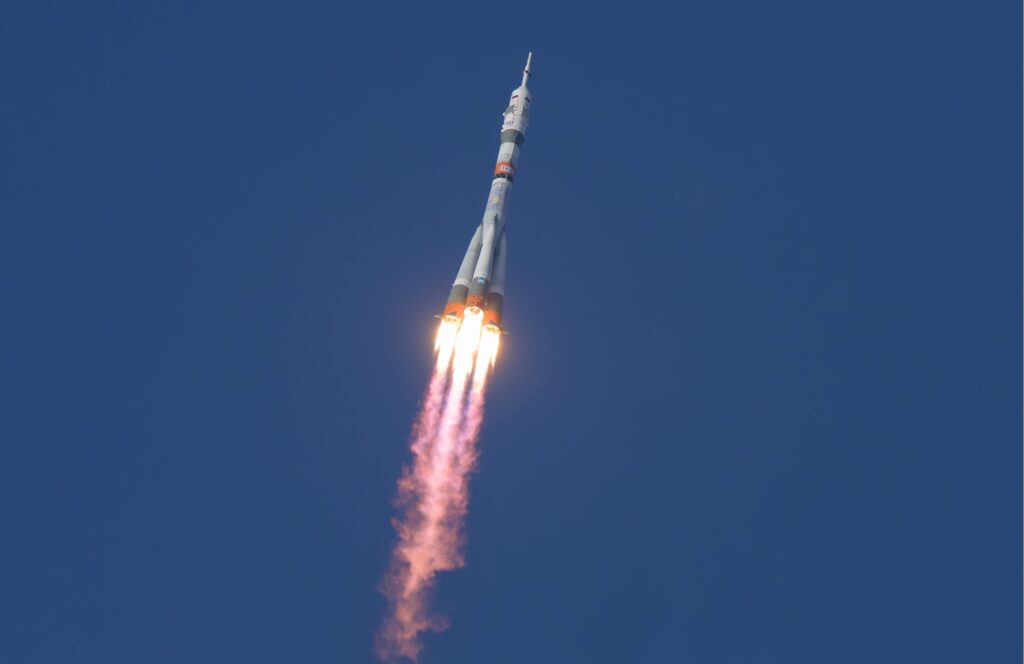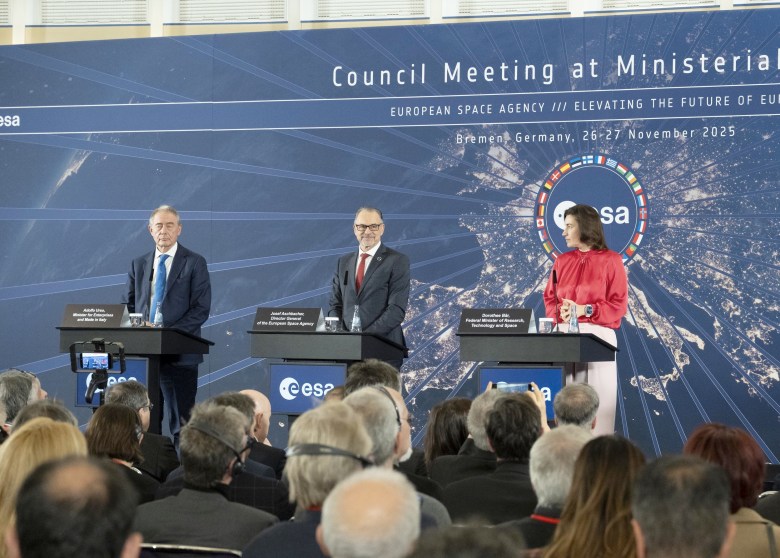Now Reading: Nuclear energy is key to American leadership in space
-
01
Nuclear energy is key to American leadership in space
Nuclear energy is key to American leadership in space


The future of American leadership in space will hinge on one factor: the ability to generate high power on orbit and on the surface of celestial bodies such as the moon.
From a physics standpoint, nuclear energy offers the highest energy density available for spacecraft, enabling more efficient and compact power generation compared to solar.
In August, NASA announced a plan to deploy a 100 kilowatt nuclear fission reactor on the moon by 2030. If properly executed through clearer regulatory guidance and risk-sharing frameworks from the government, this program will demonstrate American leadership in space and bring the world one step closer to fulfilling humanity’s potential to thrive outside the confines of Earth.
Building on nuclear history
The United States has used nuclear fission in space before.
Since the 1960s, the U.S. has relied on nuclear power sources to power satellites, Mars rovers and the Voyager probes. In 1965, the U.S. launched a fission reactor-powered satellite known as SNAP 10A into space.
We already have precedent from radioisotope generators which use plutonium to provide power on orbit, though at much lower levels than fission reactors.
That history provides not just technical precedent but also a legal and policy foundation for the safe use of nuclear power in space.
National Security Presidential Memorandum 20, signed in 2019, establishes a process for authorizing U.S. launches of spacecraft with nuclear systems. Space Policy Directive 6, signed in 2020, aims to develop and use nuclear power and propulsion systems for scientific, exploration, national security and commercial space objectives.
These frameworks show we can manage nuclear systems safely in space. NASA’s lunar reactor program is our chance to build on that foundation and shape the next era of space norms.
Accelerating a fission plant on the moon
Frameworks alone are not enough, however. Leadership will go to the nation that acts first.
A small reactor would provide consistent power untethered to the sun, sustaining lunar presence through the long night and enabling deeper exploration. The first nation to place a reactor on the moon will shape the rules of lunar presence, economic activity and influence.
But thus far, the federal government has not prioritized flying a reactor in space, resulting in a vacuum that has left disparate federal agencies uncoordinated and unfocused on orbital or lunar nuclear energy.
If the commercial companies and research institutes capable of developing such a system are to succeed, and if America is to lead, coordination, focus and prioritization at the federal level must happen.
To accelerate deployment, companies need clear risk-sharing frameworks with multiple government agencies — especially around liability — and streamlined regulatory compliance. Industry would also benefit from access to communication networks owned by NASA, DoD and the FCC; dedicated ground test facilities at NASA, DoD and DoE national lab sites; and continued support for rebuilding a domestic enriched uranium supply chain from government and industry partners alike. High costs and difficult engineering challenges will need to be overcome, but with proper prioritization, these are surmountable issues.
McKinsey estimates the space economy will grow from $630 billion in 2023 to $1.8 trillion by 2035 — a reminder that leadership in space will also mean leadership in the global economy. The use of nuclear energy in space will allow the U.S. to benefit from the opportunities available in this emerging market.
With nuclear power, we could launch better probes capable of conducting more research. Our space payloads can perform better and do more with nuclear onboard. A fission reactor on orbit, for example, enables a higher bandwidth data relay back to Earth, higher power radar and improved prospecting instruments. For the everyday American, this means better science, new industries and planetary defense.
If deployed responsibly, nuclear power on the lunar surface will allow the U.S. to peacefully explore the moon, fuel economic growth and test technologies for more ambitious space missions including asteroid mining and mapping additional bodies in our solar system including remote moons.
Beyond near-term technical and policy considerations, the strategic implications are even more profound.
In the past, cost has prevented us from doing more in space. But the cost of launching satellites is down, and venture-backed companies are willing to put significant skin in the game to demonstrate the credibility and potential of nuclear energy in space.
Industry stands ready: From startups to established companies, American firms are already developing, testing and iterating on reactor designs for space.
We are clear-eyed. Space is unforgiving, and operating a reactor there will test even our most advanced engineering. For too long, humanity has held back from its most ambitious endeavors in space because we lacked the power to sustain them.
But deploying nuclear reactors in space changes everything, and the possibilities, from unlocking water on Europa to sustaining human life on Mars, are exhilarating indeed.
If the U.S. continues to invest boldly in nuclear technologies, we can lead the next era of space exploration. If we do not, others will.
Jordan Bramble is CEO and co-founder of Antares, a California-based startup building a kilowatt scale nuclear fission microreactor for commercial and military applications on Earth and in space.
Tom Mancinelli is Head of Strategy and Policy at Antares. He previously served as Acting Under Secretary of the Navy and Principal Deputy Assistant Secretary of Defense for Legislative Affairs in the Office of the Secretary of Defense.
SpaceNews is committed to publishing our community’s diverse perspectives. Whether you’re an academic, executive, engineer or even just a concerned citizen of the cosmos, send your arguments and viewpoints to opinion@spacenews.com to be considered for publication online or in our next magazine. The perspectives shared in these opinion articles are solely those of the authors.
This article first appeared in the November 2025 issue of SpaceNews Magazine.
Stay Informed With the Latest & Most Important News
-
 012024 in Review: Highlights from NASA in Silicon Valley
012024 in Review: Highlights from NASA in Silicon Valley -
 02Panasonic Leica Summilux DG 15mm f/1.7 ASPH review
02Panasonic Leica Summilux DG 15mm f/1.7 ASPH review -
 03How New NASA, India Earth Satellite NISAR Will See Earth
03How New NASA, India Earth Satellite NISAR Will See Earth -
 04And Thus Begins A New Year For Life On Earth
04And Thus Begins A New Year For Life On Earth -
 05Astronomy Activation Ambassadors: A New Era
05Astronomy Activation Ambassadors: A New Era -
06SpaceX launch surge helps set new global launch record in 2024
-
 07Space Force plans new ‘Futures Command’ amid pressure to speed up modernization
07Space Force plans new ‘Futures Command’ amid pressure to speed up modernization




















